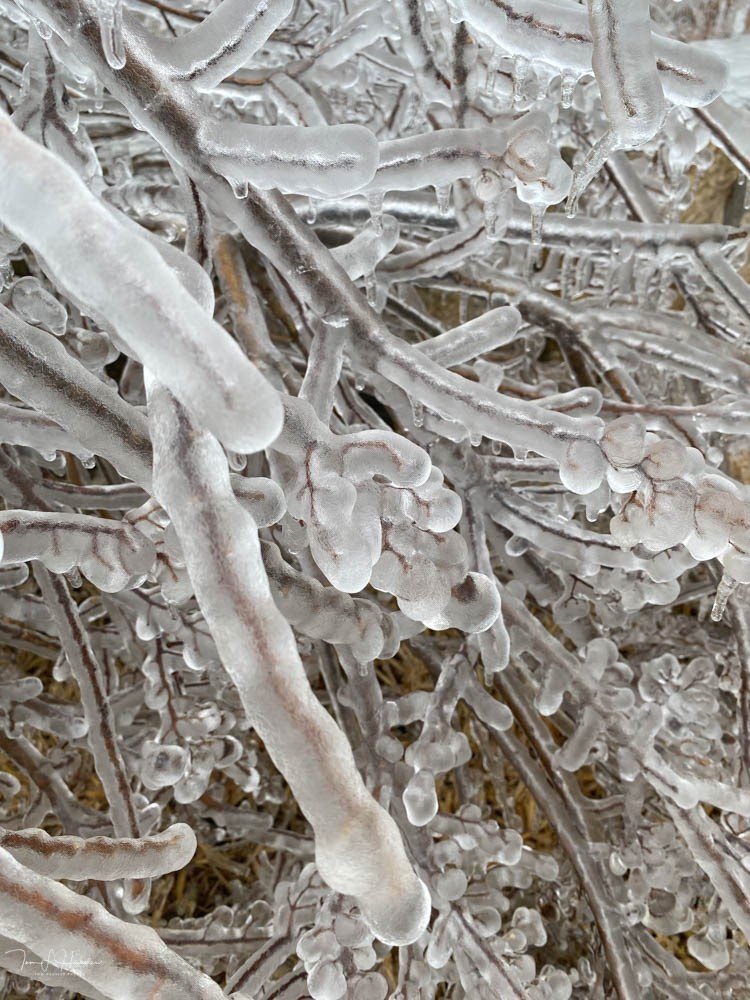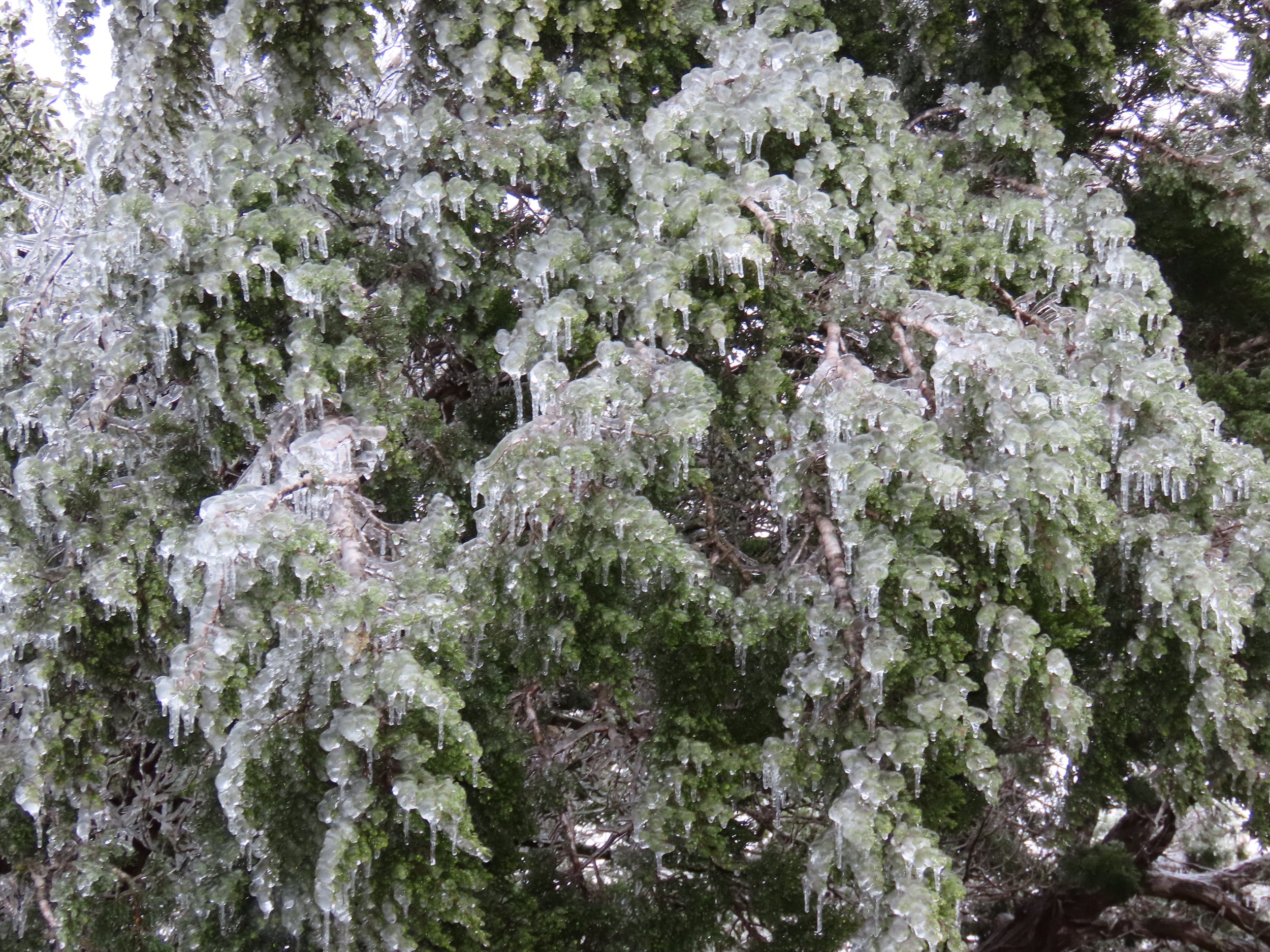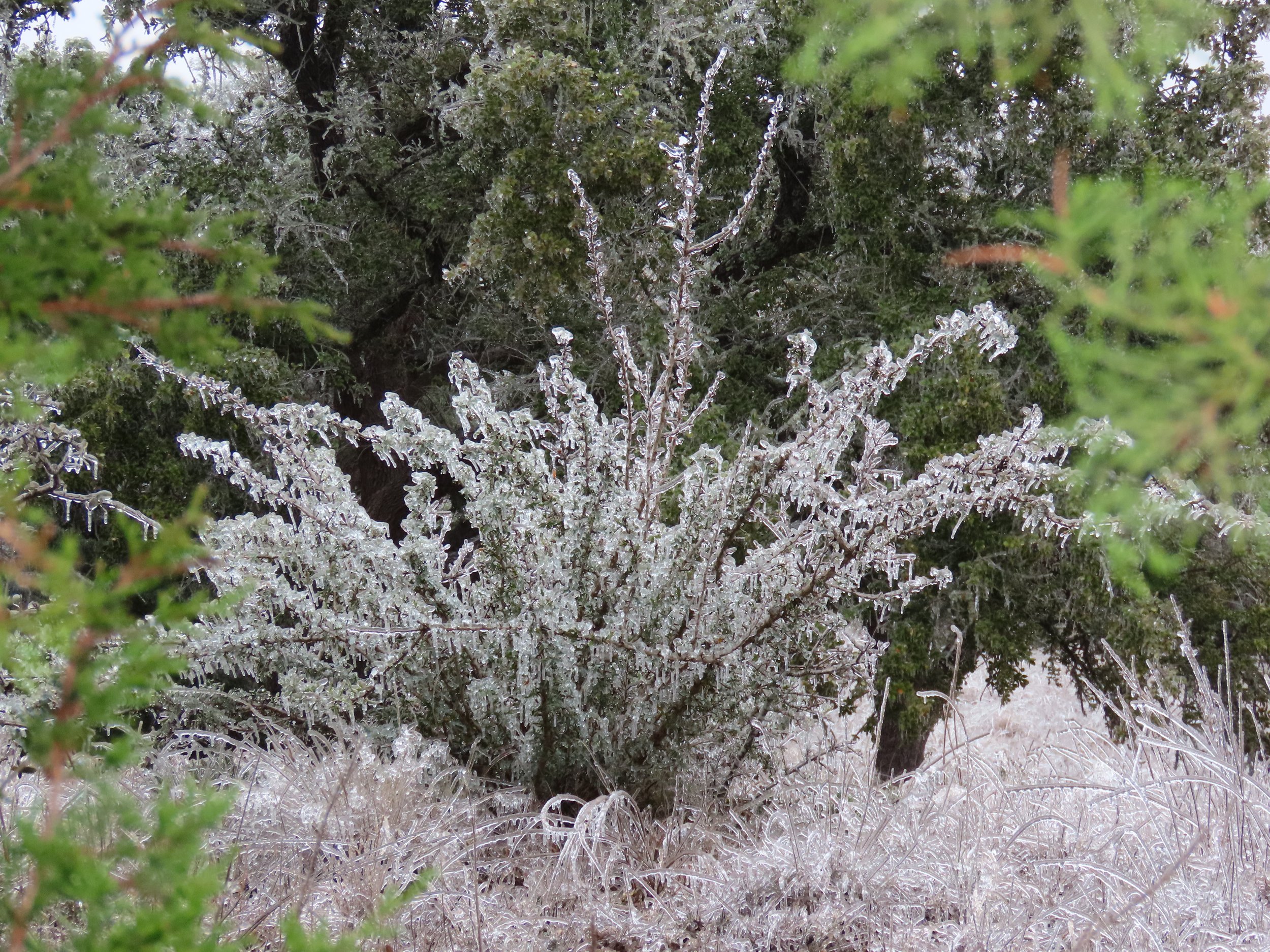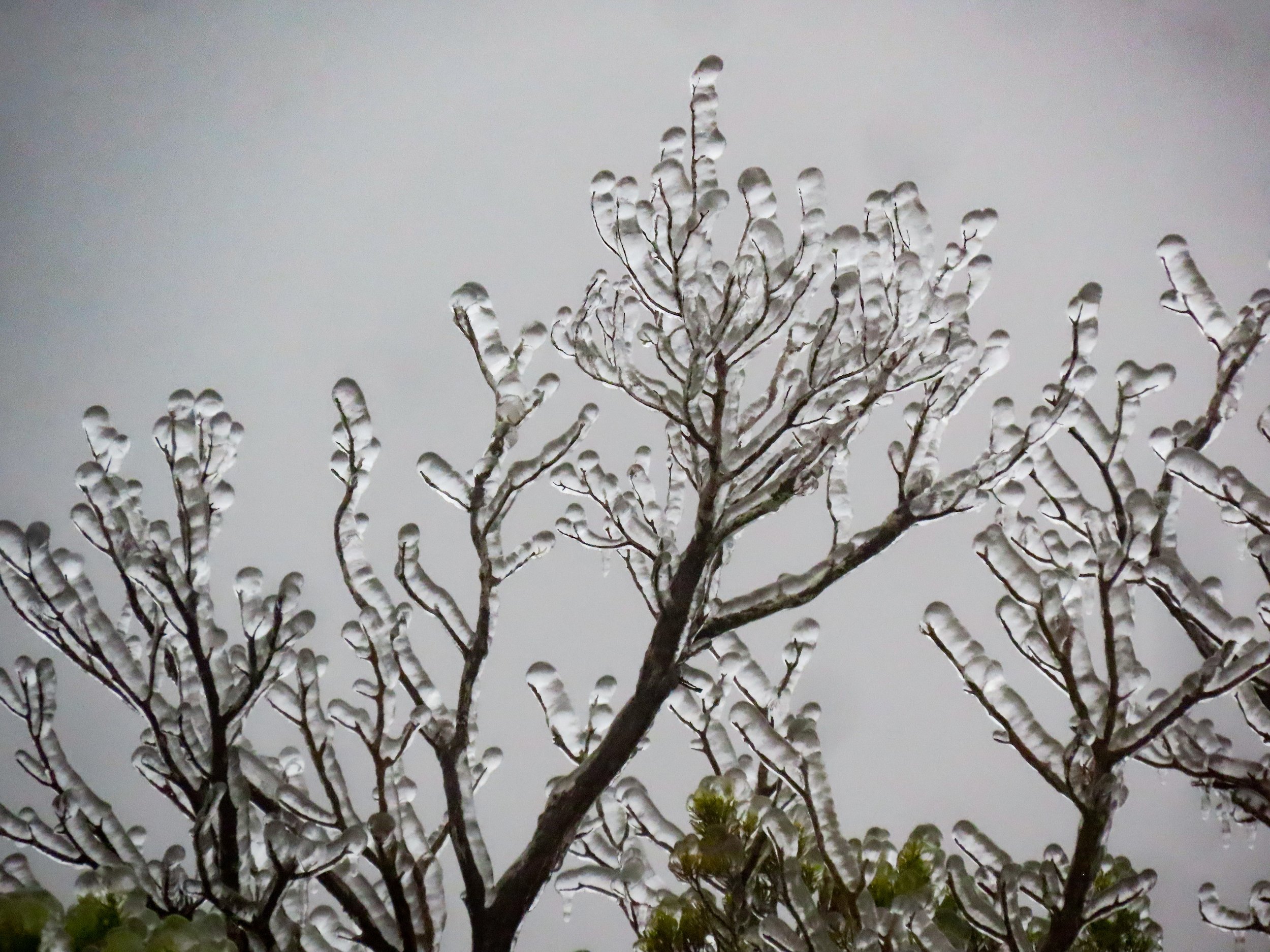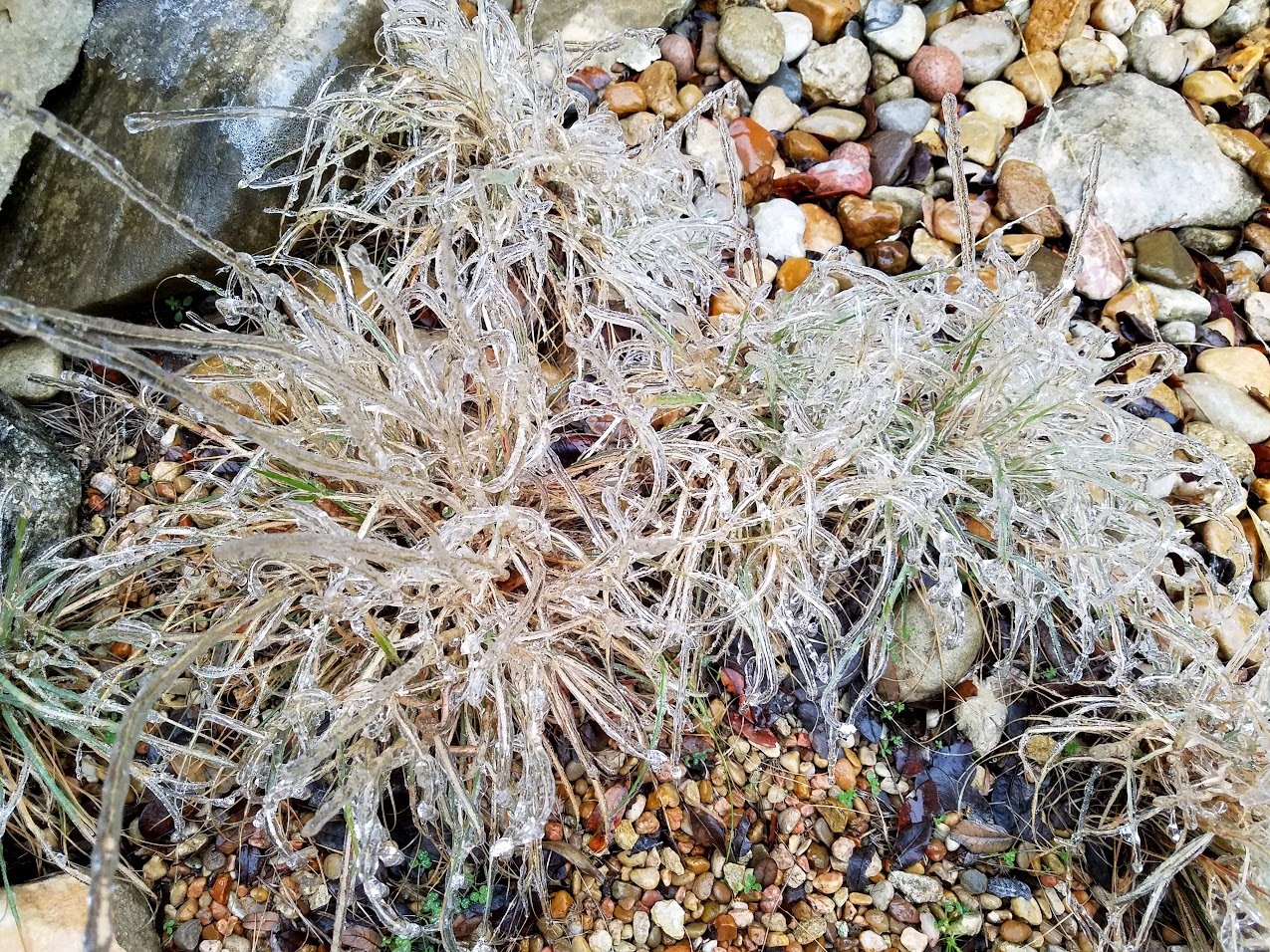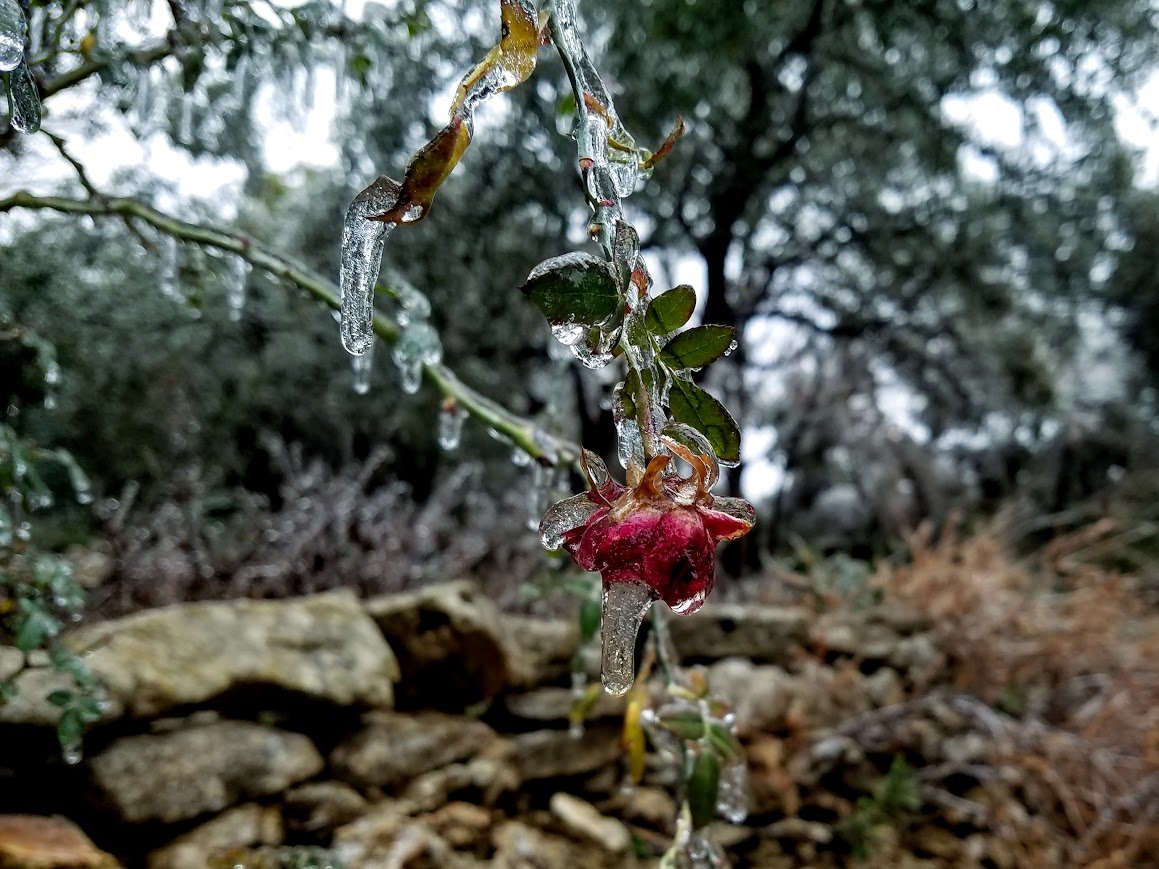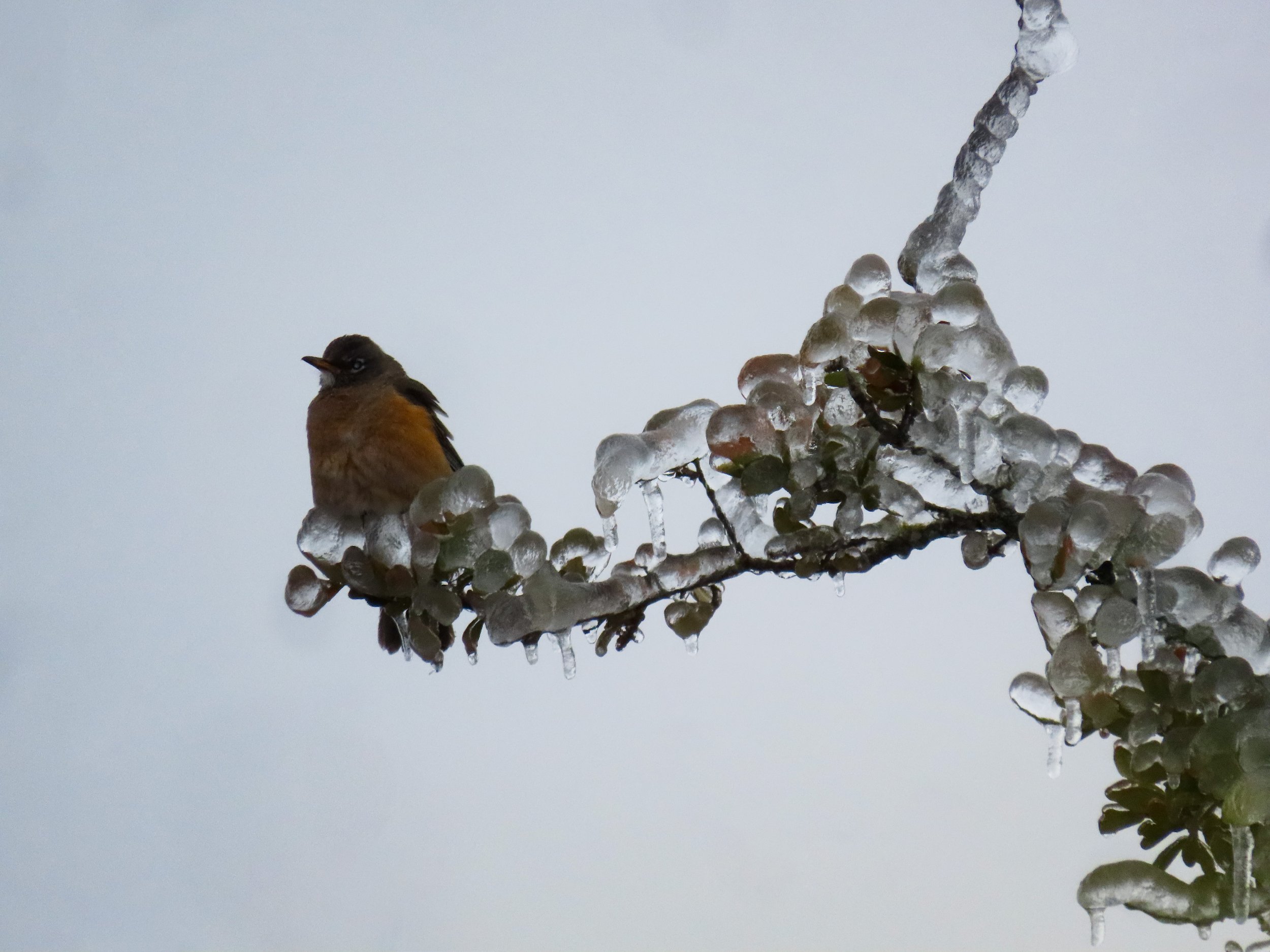Ice—Beauty and Beast
Tom Hausler
Mimi Cavender
The Ice Storm of February 2023 awed us with its undeniable beauty. But its destructive force left thousands of households without power and devastated our Central Texas landscape. It was a beast.
Mimi Cavender
Freezing rain whispered down around us all night. It coated every drought-crisped blade of grass, every leaf, twig, and branch. And then out in the dark, far, then near—shots? No, the snapping had begun of live oaks and junipers—branches, trunks, whole canopies exploding from the pounds, the tons, of ice. Everywhere.
Shannon du Plessis
We awoke to that strange leaden blue sky more typical of North Dakota and to an unfamiliar world encased in an inch of ice.
Tom Hausler
Tom Hausler
There was freezing mist the whole dark day, trees exploding like artillery, collapsed power lines, a paralyzed economy, and another frozen night. When the icing finally stopped, the higher parts of Hays County had accumulated as much as two inches of ice.
Constance Quigley
Eva Frost
Eva Frost
Shannon du Plessis
The chainsaws seemed to start immediately. You or the folks down the road were out clearing your driveway or roof of halves of junipers and the tops of your live oaks.
Mimi Cavender
Master Naturalist Tom Hausler reports he had “twenty-six trees down or damaged in the yard alone. I live west of Dripping Springs. I have 30+ acres, so hundreds of trees were damaged. Twice as bad as two years ago. The two days of [frozen] mist and light rain was too much for the trees; branches broke under 100s of pounds of ice.”
Mimi Cavender
Mimi Cavender
The live oaks seem to concern us most—and took the most dramatic damage. Word of mouth has it that trees that weren’t winter bare—the cedars and live oaks, and especially our “trimmed–up” oaks!—were most likely to break under the heavy ice.
Hardware stores have waiting lists for chainsaws. Chippers can’t be begged or borrowed because the contractors who’d snapped them up are now planning on early retirement. Any tree debris not mulched and used in our gardens for soil and moisture retention might be stacked in brush piles somewhere on our property as welcome shelter for birds and other wildlife.
If the heartbreak of February's ice damage wasn't enough, we're also aware that it's now March, a month into Oak Wilt season! From the experts at Texas A&M, here's everything we need to know to preserve our beautiful Texas Hill Country trees: Texas Oak Wilt and AgriLife Today
For some of us the sheer volume of debris is shocking. But after massive cutting and clearing, how quickly we’re adjusting to the new normal!
Half of that juniper grove broke under the ice…
…and is now a pile of cedar mulch. Smells great.
A heartbeat in Nature’s time, and our trees are fewer.
And Central Texas is still here, still beautiful.
We may come to remember the Ice Storm of February 2023 not as beast but as beauty.
Dick McBride
Tom Hausler
Constance Quigley
Constance Quigley
Here’s a slideshow of some of that icy Hays County beauty.
The Hays County Chapter of Texas Master Naturalist™ is proud of our membership, a collegial group of thoughtful, trained volunteers. Their diverse backgrounds bring a wealth of insight and seasoned talent to the mission of the Chapter. Our photographers, some of whose casual work is featured here, are the eyes of the Naturalist. Through their lens, we see more of the natural world we love. For our photographers featured here, we’re so grateful. And please, sir, can we have some more?
Sometimes It Takes an Ice Storm
Betsy Cross
If I may add one little happy note here to answer your question, Mimi, YES.
Meet Olivia! After 20 years of waiting for an Eastern Screech Owl to take up residence in her owl box, HCMN Dixie Camp had almost given up hope that she might attract an occupant.
“Olivia” Photo by Dixie Camp
But then, during the Ice Storm, one little screech owl was looking for a place to shelter, and she took refuge in Dixie’s owl box. She continues to occupy the box today.
Now that Olivia has claimed it as her own, she and Dixie have been keeping a close eye on one another. From Dixie: “By the way, a squirrel ran across the tree limb toward the nest box entry. Olivia flew at him, and he leapt over her head onto an upper limb! Then she circled around and flew down almost face to face with me and a workman who had joined me in observing her! Sort of a ‘Look Mom, no squirrel’ moment! All too fast to catch on camera, but we do have a witness!”
This just goes to prove that patience pays, and never stop believing that nature finds a way.











